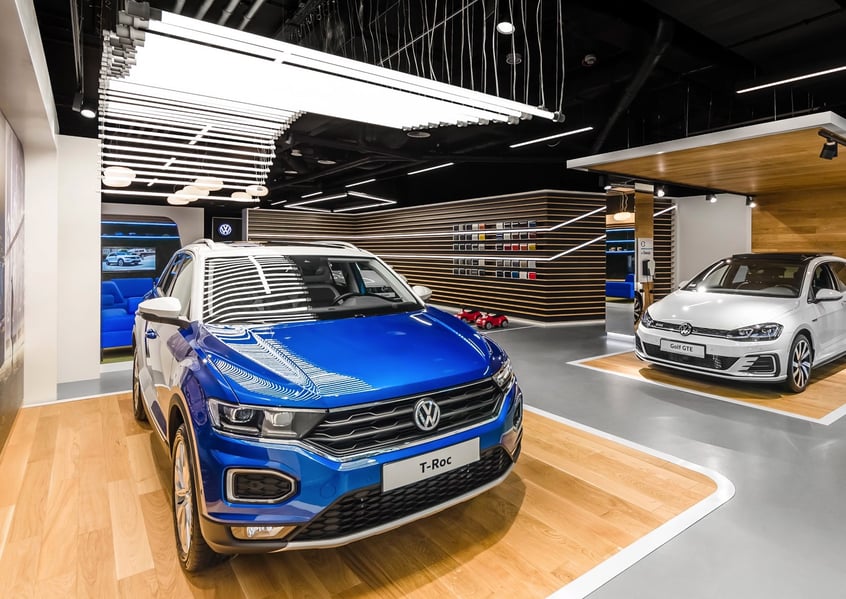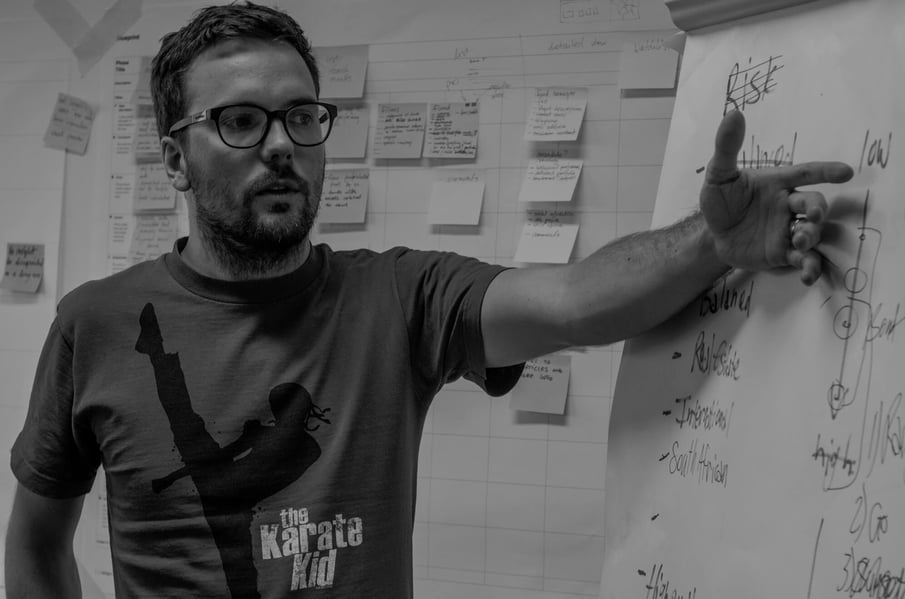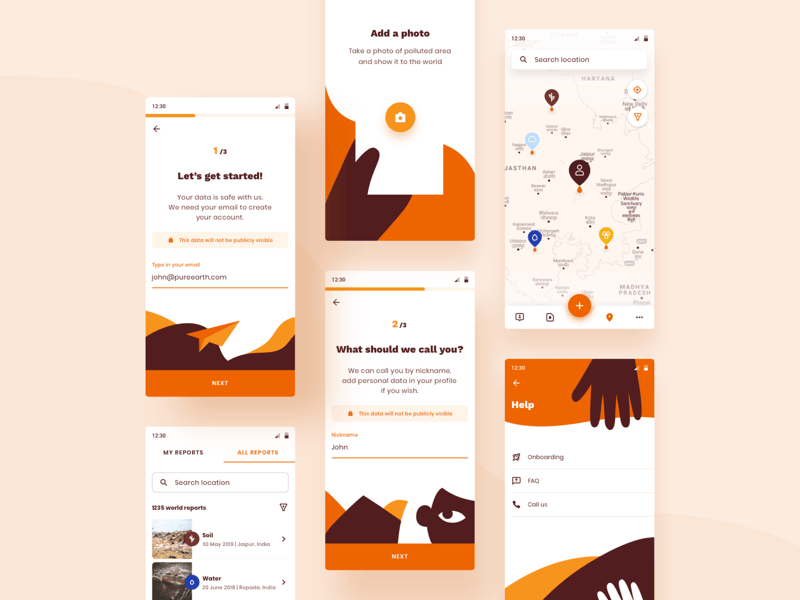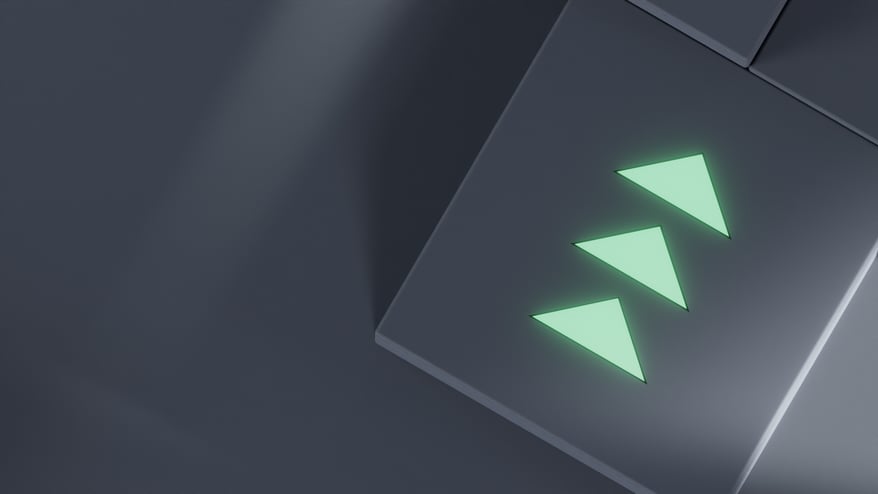Product Design Sprint: get answers to critical business questions fast


Accelerate growth after Product Design Sprint workshops
Design thinking in Product Design Sprint
-
Simple solutions. A collaborative approach and effective communication provide insightful answers to complicated problems.
-
Understand users. A Product Design Sprint is based on listening, trust, and building meaningful relationships with users.
-
Increased efficiency. A design sprint is intended to be short and agile and is easily adapted to the complexity of a project.
-
Lower risk. A Product Design Sprint shrinks months of development, prototyping, and feature testing into just a few days.
Volkswagen: the average sale price increased by €1,000 thanks to insights from discovery workshops
Volkswagen interviewed about one million customers who bought a car in the past ten years. Based on the insights from the report and Product Design Sprint workshop, the idea for a first-in-the-world car boutique – Volkswagen Home – was born. The team created a completely new buying experience that translated into:
- €1K higher average sale price at VW Home than in traditional sales channels,
- Encouraging customers to choose a car with a better, more expensive direct-shift gearbox (DSG), increasing the market average to 25%

-
We have built a grand and impressive building. But without the insights from the discovery workshops, we would be stuck on the ground-floor forever.
.jpg?width=65&height=65&name=Artur%20Kryzan%20Volkswagen-s(1).jpg)
Artur Kryzan
CX Manager at Volkswagen
Find a digital product design solution for every stage of your business development
-
Discovery. Collaborate with the design team to increase productivity, boost profits, enhance public image, or make changes in internal or external processes.
-
Product Research. Dive deep into user behavior, the business environment, and your product to collect the data necessary to establish the best way forward for your product.
-
UX & UI Design. Translate business needs into real solutions and design seamless user interfaces that help you fulfill your strategy and goals.
-
Branding. Design a consistent language to communicate with your customers and create an emotional connection between them and your brand.
A design process based on best practices and methodologies that deliver
Make sure you have the right tools and battle-tested methodologies to tackle the challenges, and never stop the process of enhancing your product.
-
Project setup. Ensure your team has all the key information and assets
-
Research and concept. Collect insights and shape the product or its features
-
Wireframing. Transfer your ideas into connected wireflows
-
Testing and validation. Verify solutions with potential users
-
Visual design. Craft delightful interfaces aligned with established insights
-
Development handover. Get ready for implementing designs into working products
What is a Product Design Sprint?
Contents
A Product Design Sprint is a five day workshop that uses design thinking to reduce the risks inherent in successfully introducing new products or features. This planning methodology can be effective in moving your company forward, regardless of the stage your business is at. Each day of the sprint corresponds to another stage of solving the problem.
The five phases, which include understanding the problem, prototyping, and user testing, will enable you to better understand your business ideas and needs. Our flow has proved to be effective in finding the right solutions, building new features, and achieving goals.
A Product Design Sprint is a powerful way to explore different perspectives and identify the best way forward for your product or idea.
The design sprint methodology was originally developed at Google by former GV design partner Jake Knapp. The aim was to vastly reduce the time it took to understand and test an idea, learn from the good, and eliminate the problems, all without risking large sums of money in the process.
The result was the ability to condense months’ worth of work into just five days.
Design sprint phases
1. Understand
The first day of a design sprint is all about getting insights – we want to gain a full understanding of your user requirements, business needs, and technology capabilities. Discussion during this stage is essential to create a roadmap for the sprint week.
At the very beginning, we identify long-term goals, obstacles, and challenges. We run some exercises to paint a bigger picture of the problem. At the end of the day, you pick the main goal you want to achieve during the sprint – the aim is to choose a target that is ambitious but manageable and able to be solved in a week. In this phase, we will use tools such as stakeholder mapping and user personas to inform our decision-making.
2. Diverge
On the second day, we focus on generating and exploring as many ideas as possible. We’ll first review existing solutions, including their strong and weak points. The participants will also perform exercises to build new insights and develop solutions.
Through brainstorming sessions and individual analyses, each team member will come up with ideas that will later be studied and tested. Customer journey mapping is particularly helpful in this phase for gaining a deeper understanding of how users interact with a product. It is also an important step in identifying user pain points.
3. Converge
At this stage, we’ll have plenty of ideas that the team came up with during the previous two steps, which is great, but they can’t all go forward for testing. The team’s goal now is to identify the best ideas and decide which of them should be prototyped in the following step.
To achieve this, we’ll critique each solution in relation to the main goal. Based on the selected ideas, we’ll create a storyboard and sketch a step-by-step roadmap for building a prototype.
4. Prototype
On the fourth day, it’s time to put all that the team has developed into practice. You will turn your storyboard into a prototype – a realistic artifact that you will then test with a customer.
The main assumption here is that you will only build the customer-facing surface of your product or service – the aim is to keep it as low-fi as possible while still allowing you to get answers to your questions. In this way, the prototype will be up and running in just one day – ready for review in the final stage.
There are two common ways to create a prototype – a paper prototype is particularly quick and cheap to create while a digital prototype can be interactive and lets you test interactions more realistically.
5. Test
GV calls this phase the “moment of truth”. This is when you test your ideas with users, business stakeholders, and technical experts and hear direct feedback from them. You can gain valuable insights from interviewing users and learn by watching as they interact with your prototype.
This stage will validate your solutions before you invest any money on designing and developing your product. At the end of the fifth day, you’ll have a clear idea of the road ahead and know what you should do next.
After the design sprint
In the following weeks, our team will send you a detailed report from the workshops with all materials and canvases digitized including:
- Lo-fi prototypes for some of the user stories
- A project roadmap, broken down into phases
- Pre-defined tasks for each phase
- User journey maps, storyboards, and information architecture diagrams
Benefits of a Product Design Sprint
Depending on your purpose for the Product Design Sprint and the initial problem to be solved, you will get tailored solutions and recommendations that will enable you to generate a unique value proposition for your existing or potential customers. A Product Design Sprint includes in-depth interviews with founders about their product idea, design thinking, and an agile approach.
They have been successfully tested in numerous projects. Clients confirm that they provide an actionable product roadmap for product development or a prevalidated prototype.
Helping innovators achieve their goals through exceptional digital design
The Netguru software design team helps innovators achieve their business goals through exceptional design and data-driven consulting. Share your challenge, and we’ll bring maximum value at any stage of your business.
Sixty multidisciplinary and internationally recognized designers with experience gained on full-stack projects for startups, unicorns, and well-established enterprises will support you on your journey to success.
Running a design sprint to help a city with community challenges
With 1.7 million residents and an infinite amount of public data, Warsaw joined the open data movement and began encouraging organizations to follow suit, but a number of challenges lay ahead – mainly, that they had accumulated an incredible amount of data, which was both a great opportunity and a challenge.
Netguru offered to join forces with city representatives and NGO workers to run a PDS that would result in an operational strategy for organizing and sharing public data.
The workshop involved brainstorming sessions, as well as specifying goals and parameters based on residents’ needs. A project evaluating the quality of life in distinct areas of Warsaw (including such factors as transportation, noise levels, and healthcare accessibility) was the winner.
The city is on its way to bringing it to life.

Remote PDS workshops with Pure Earth
Pure Earth, an international non-profit organization acting to clean global toxic pollution, asked us to build an app that will raise awareness about pollution and its effects. Product Design Sprint was a part of the project.
Imagine organizing a 3-day workshop onsite with participants based in three different time zones (Europe, North America, South Asia).
We used the standard Product Design Sprint framework to define a clear role for each participant, and leveraged the tools we had, establishing an orderly emailing procedure, using Google Meet and its inbuilt chat for video calls, and chose mural.co for our virtual workspace.
Thanks to a good process including a PDS, we established an effective visual language for the project, one that will help the brand communicate its message.

Our partners about the cooperation with Netguru
-
Let me put it this way: we have built a grand and impressive building. But without Netguru’s insights, we would be stuck on the ground-floor forever.
.jpg?width=65&height=65&name=Artur%20Kryzan%20Volkswagen-s(1).jpg)
Artur Kryzan
CX Manager at Volkswagen -
Netguru has been the best agency we've worked with so far. The team is able to design new skills, features, and interactions within our model, with a great focus on speed to market.
.jpg?width=65&height=65&name=Adi%20Pavlovic%20Keller%20Williams-s(1).jpg)
Adi Pavlovic
Director of Innovation at Keller Williams -
I’ve had a long-lasting partnership with Netguru. Happy that it works so well and hope that we can cooperate on more projects in the future. Netguru always tries to make things possible.

Susanne Wechsler
Director B2B at Babbel
15+
Years on the market400+
People on Board2500+
Projects Delivered73
Our Current NPS Score
Delivered by Netguru
We are actively boosting our international footprint across various industries such as banking, healthcare, real estate, e-commerce, travel, and more. We deliver products to such brands as solarisBank, PAYBACK, DAMAC, Volkswagen, Babbel, Santander, Keller Williams, and Hive.
$5M
Granted in funding. Self-care mobile app that lets users practice gratitude$28M
Granted in funding. Investment platform that enables investment in private equity funds$20M
Granted in funding. Data-driven SME lending platform provider$47M
Granted in funding. Lead generation tool that helps travelers to make bookings
Product Design Sprint: All your questions answered
Read more on our Blog
Check out the knowledge base collected and distilled by experienced professionals
Our work was featured on
Start your project with us or take existing one to next level


Looking for other services?
-
Digital product design. Solve real human problems and provide the ultimate UX for your web and mobile applications.
-
Web development. Cutting-edge technology and reliable solutions tested in battle.


